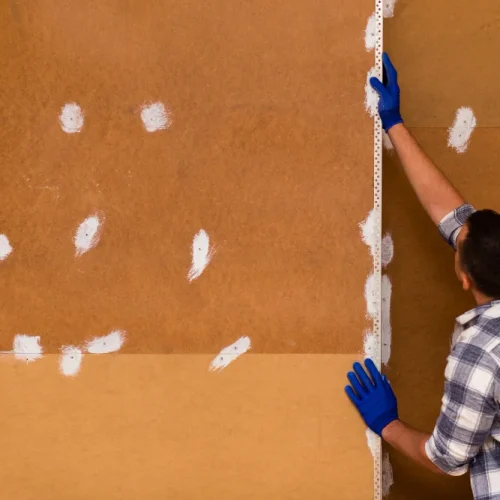Have you ever held a piece of soft sheepskin in your hands and wondered about its journey before it became a rug, lining, or craft material? In German-speaking regions, there’s a word that captures this stage of transformation: Zuschneidfelle. It refers to pelts or hides, often sheepskins, prepared for cutting and repurposing into something new. But why does this matter, and what makes Zuschneidfelle worth exploring beyond the surface?
When I first encountered the term during a visit to Vienna, it was in a small leather workshop tucked away near Naschmarkt. The craftsman showed me a stack of supple hides, explaining how each was selected and cut depending on its future use. What struck me wasn’t just the craftsmanship but also the heritage behind it. Zuschneidfelle are not simply raw materials; they’re part of a centuries-old relationship between humans, animals, and utility.
What Are Zuschneidfelle?
At its simplest, Zuschneidfelle translates to cutting skins or hides prepared for processing. These hides can come from sheep, goats, cattle, or other animals. Unlike finished leather, Zuschneidfelle are intermediate products—often cleaned, sometimes tanned, and ready to be cut into patterns for garments, upholstery, rugs, or industrial uses.
While the term may sound niche, in German-speaking regions such as Austria, Switzerland, and Germany, it’s widely recognised among leatherworkers, upholsterers, and artisans. The word sits at the intersection of tradition and utility, reflecting both the cultural significance of animal hides and their practical value in everyday products.
A Cultural and Historical Perspective
The use of hides dates back to prehistoric times. Early humans relied on pelts not only for warmth but also for shelter, tools, and symbolic uses in rituals. In German-speaking regions, the craft of processing hides evolved alongside cattle and sheep farming. Historical records show that medieval guilds of tanners and furriers held a crucial role in local economies.
Today, Zuschneidfelle are still valued, though their uses have expanded. From traditional Alpine clothing like the Lederhose to luxury car interiors, the legacy continues. According to a 2022 report by the International Council of Tanners, Europe remains one of the leading producers of high-quality hides, with Germany accounting for a notable share thanks to its livestock industries.
The Craftsmanship Behind Zuschneidfelle
Processing a Zuschneidfell isn’t as straightforward as cutting fabric. Each hide is unique, shaped by the animal’s life, environment, and even its health. Scratches, scars, or irregularities influence where and how the hide can be cut.
I once spoke to a small-scale artisan in Salzburg who compared the process to tailoring: “When you cut fabric, you can predict how it behaves. With a hide, you must respect its story. Each mark tells you something, and you adapt your design accordingly.”
This perspective shows that Zuschneidfelle demand skill, patience, and respect. The artisan’s choices—where to cut, what to discard, how to maximise yield—determine the quality of the final product.
Common Uses of Zuschneidfelle
1. Fashion and Clothing
Sheepskin jackets, suede shoes, and leather gloves often begin as Zuschneidfelle. In fact, suede itself is produced by splitting hides into layers and sanding them to a soft finish.
2. Home and Interior
From rugs to furniture upholstery, Zuschneidfelle add warmth and durability. Scandinavian and Alpine interior trends have popularised natural sheepskin throws as symbols of cosiness (Gemütlichkeit).
3. Crafts and Traditional Uses
Smaller pieces are ideal for handicrafts—wallets, belts, or decorative elements. In some Alpine villages, hides are still used in folk costumes and ceremonial dress.
4. Industrial and Automotive Applications
Luxury cars, especially German brands, rely on high-grade hides for seating and interiors. According to Statista (2023), the global automotive leather market is valued at over $30 billion, with Germany leading innovation in sustainable tanning methods.
Ethical and Environmental Considerations
The conversation around hides and pelts cannot ignore ethics and sustainability. Critics often question the environmental impact of leather production, particularly tanning processes that traditionally use chromium salts.
However, modern practices are shifting. For example, the Leather Working Group (LWG) promotes sustainable and transparent supply chains, ensuring hides used as Zuschneidfelle are often by-products of the meat industry rather than standalone animal exploitation.
As a consumer, I once purchased a sheepskin rug only to later learn about the tannery’s eco-friendly processes. Knowing the hide wasn’t wasted but repurposed from an existing supply chain changed how I valued the product. It became less about indulgence and more about responsible craftsmanship.
Expert Insight: Why Zuschneidfelle Still Matter
Dr. Katharina Müller, a materials scientist at the University of Munich, notes: “While synthetic alternatives have grown in popularity, natural hides remain unmatched in terms of breathability, durability, and long-term performance. Zuschneidfelle represent not just tradition but also innovation, especially as tanning becomes greener.”
This expert view underscores the point: Zuschneidfelle are not relics of the past. They are evolving with modern needs and technologies.
Practical Tips for Buying Zuschneidfelle
If you’re considering Zuschneidfelle for personal or professional use, here are a few actionable steps:
- Check origin → Always ask where the hide comes from. Transparency matters.
- Look for certification → Labels from groups like LWG or OEKO-TEX indicate sustainable processing.
- Examine quality → Feel the hide. A supple texture and even colour often indicate good craftsmanship.
- Match purpose to type → For rugs, a thick sheepskin works best; for upholstery, cowhide offers greater durability.
Read Also: Lyposingrass: Nature’s Overlooked Herb with Powerful Potential
FAQs
What animals are most common for Zuschneidfelle?
Sheep and cattle are the most common, though goat and deer hides are also used in some regions.
Are Zuschneidfelle eco-friendly?
They can be, particularly when sourced as by-products and processed in certified tanneries with eco-friendly methods.
How are Zuschneidfelle different from finished leather?
Zuschneidfelle are intermediate products—cleaned and often tanned, but not yet cut into their final form.
Can I use Zuschneidfelle for DIY crafts?
Yes. Many crafters use smaller pieces for wallets, belts, or even bookbinding.
Final Thoughts
Zuschneidfelle may sound like an obscure technical term, but they’re part of a living tradition that spans centuries and industries. From Alpine villages to modern luxury cars, these hides continue to shape fashion, interiors, and crafts in ways that are both practical and cultural.
So next time you see a sheepskin rug or slip on a pair of suede shoes, ask yourself: could this have started its life as a Zuschneidfell? The answer might surprise you, and it just might make you appreciate the material a little more.
Your Turn: Have you ever worked with Zuschneidfelle or purchased a product made from one? Share your experience in the comments—I’d love to hear your story and how you see the balance between tradition, craftsmanship, and sustainability.









